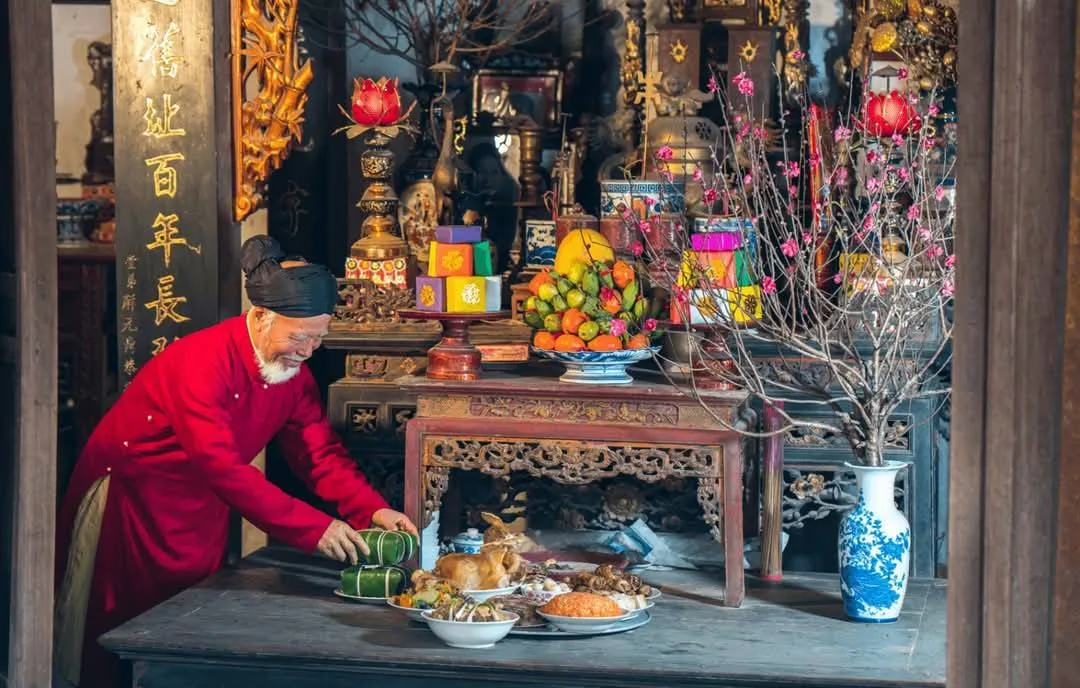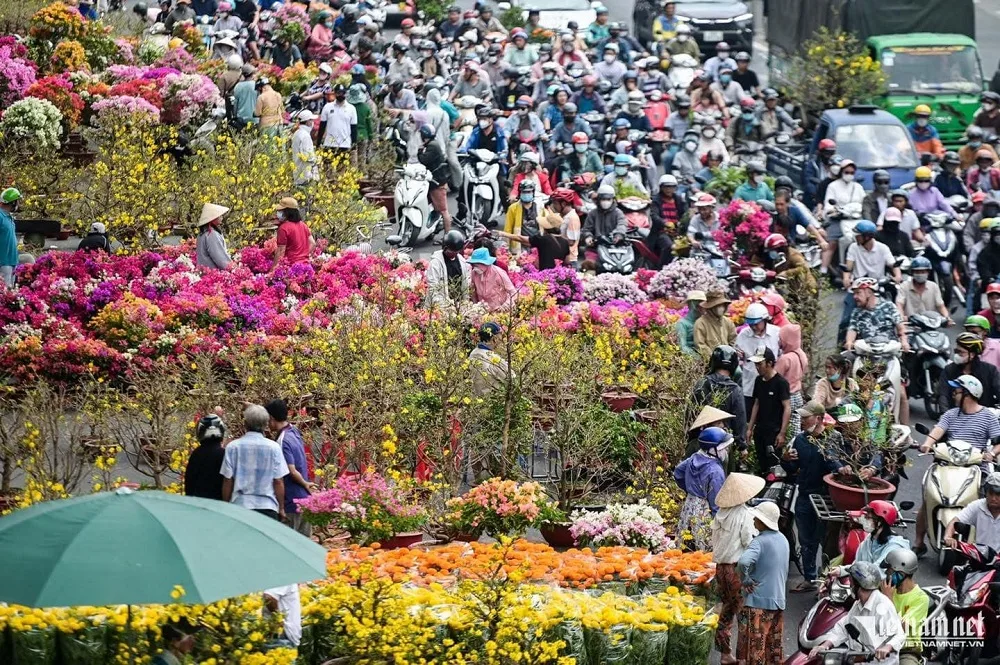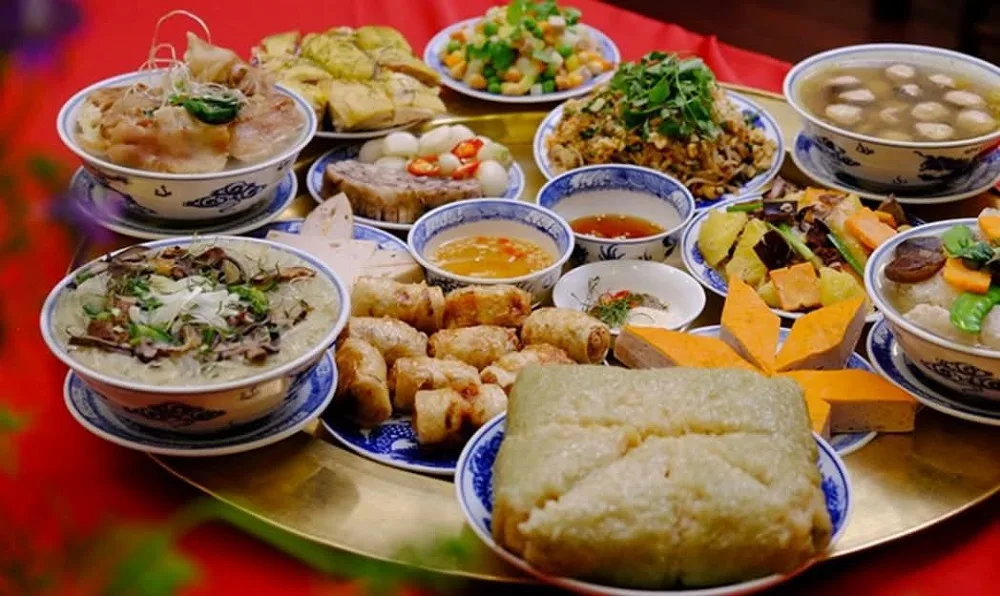Ultimate Guide to Vietnamese New Year 2026 (Tet): 21 Traditions, Dates & Travel Tips
Discover the complete guide to Vietnamese New Year (Tet) 2026, falling on February 17. From ancient traditions and lucky customs to regional celebrations and travel tips, this comprehensive resource covers everything you need to know about experiencing Vietnam’s most vibrant festival, including zodiac insights for the Year of the Snake.

What Is Tet? Understanding the Heart of Vietnamese Culture
Tet Nguyen Dan (often simply called “Tet”) represents the most significant cultural celebration in Vietnam, marking the arrival of spring and the lunar new year. In 2026, Tet falls on February 17, ushering in the Year of the Snake according to the lunar calendar.
More than just a holiday, Tet embodies Vietnam’s cultural identity and spiritual heritage. This celebration traces its roots back thousands of years, blending indigenous Vietnamese customs with Chinese influences. The festival serves as a sacred time when families reunite, ancestors are honored, and people prepare for prosperity in the coming year.
The word “Tet” itself derives from “Tiết,” meaning “joint” or “occasion” in Sino-Vietnamese, symbolizing the transition between seasons and years. While sharing similarities with Chinese New Year, Vietnamese Tet incorporates distinct traditions that reflect the nation’s unique cultural landscape.
For visitors planning to experience Vietnam during this special time, understanding Tet’s significance allows for deeper cultural immersion and appreciation of local customs.
When Is Tet 2026? Key Dates and Public Holiday Schedule
The Vietnamese Lunar New Year in 2026 officially begins on February 17 (the first day of the lunar calendar). However, celebrations typically extend over several days before and after this date. Here’s the complete timeline for Tet 2026:
- February 14-16, 2026: Pre-Tet preparations (cleaning homes, shopping, cooking)
- February 16, 2026 (Lunar New Year’s Eve): Giao Thừa ceremony
- February 17, 2026: First day of Tet (Year of the Snake begins)
- February 17-23, 2026: Official public holiday period
- February 24-26, 2026: Extended celebrations, family visits continue
Most government offices, businesses, and schools close for 7-9 days, with many Vietnamese taking additional time off. The most culturally significant period spans from New Year’s Eve through the first three days of the new lunar year.
Transportation systems operate on modified schedules during this period, with trains, buses, and domestic flights often fully booked weeks in advance. If you’re planning to travel within Vietnam during Tet 2026, booking accommodations and transportation at least 3-4 months ahead is strongly recommended.

Year of the Snake 2026: Zodiac Significance and Predictions
2026 welcomes the Year of the Snake (Tân Tỵ), the sixth animal in the Vietnamese zodiac cycle. The Snake symbolizes wisdom, intuition, and transformation in Vietnamese culture.
People born in Snake years (1929, 1941, 1953, 1965, 1977, 1989, 2001, 2013, and now 2026) are believed to possess distinctive qualities:
- Intelligence and strategic thinking: Snakes are considered wise and calculated in their approach to challenges
- Intuitive perception: A natural ability to sense situations before they develop
- Elegant charm: Known for sophistication and refined taste
- Privacy-oriented: Tend to keep personal matters close
- Determination: Persistent in pursuit of goals
In Vietnamese astrology, 2026 is predicted to be a year of thoughtful progress, personal growth, and meaningful transformation. The Snake’s influence suggests a time for careful planning rather than impulsive actions.
During Tet 2026, you’ll notice Snake imagery prominently displayed in decorations, greeting cards, and gift packaging throughout Vietnam. Many families will select specific flowers, colors, and foods that harmonize with the Snake’s energy to maximize good fortune.
21 Essential Tet Traditions and Customs in Vietnam
1. Cleaning and Decorating the Home (Dọn Nhà)
The Tet preparation begins with a thorough house cleaning, symbolizing the sweeping away of bad luck from the previous year. Families then decorate with vibrant colors, particularly red and yellow, which represent good fortune and prosperity. Homes are adorned with:
- Peach blossoms (hoa đào) in northern Vietnam
- Apricot blossoms (hoa mai) in southern regions
- Kumquat trees with bright orange fruits symbolizing fertility and abundance
- Red banners (câu đối) with calligraphy expressing wishes for the new year
2. Kitchen God Ceremony (Cúng Ông Táo)
On the 23rd day of the last lunar month (February 6, 2026), Vietnamese families perform a special ceremony to send the Kitchen God (Ông Táo) to heaven. This deity reports to the Jade Emperor about the family’s conduct throughout the year. Families typically:
- Prepare offerings of fresh fruit, sticky rice, and traditional Vietnamese sweets
- Release live carp into rivers or lakes, as these fish serve as the Kitchen God’s transportation
- Clean the family altar in preparation for the return of the Kitchen God on New Year’s Eve
3. Year-End Feast (Tất Niên)
The night before Tet Eve, extended families gather for an elaborate feast called Tất Niên. This meal features traditional dishes and provides an opportunity for multiple generations to reconnect before the new year begins. The feast typically includes:
- Regional specialties representing family heritage
- Dishes with symbolic meanings for prosperity and good health
- Stories and reminiscing about the past year
- Discussion of hopes and plans for the coming year
4. Ancestor Worship (Cúng Gia Tiên)
Perhaps the most sacred aspect of Tet involves honoring ancestors through elaborate offerings. Families meticulously prepare ancestral altars with:
- Five-fruit tray (mâm ngũ quả) – carefully arranged tropical fruits representing the elements
- Traditional Tet foods – bánh chưng, bánh tét, and regional specialties
- Fresh flowers, incense, and candles
- Symbolic items representing what the ancestors enjoyed in life
This spiritual practice reinforces the Vietnamese belief that ancestors return home during Tet to celebrate with their living descendants.
5. New Year’s Eve Ceremony (Giao Thừa)
At midnight on Lunar New Year’s Eve (February 16, 2026), families perform the sacred Giao Thừa ritual to welcome the new year. This ceremony takes place both at home and at local temples, involving:
- Burning incense to invite ancestors to join the celebration
- Offering prayers for prosperity and good health
- Setting off firecrackers and fireworks (in designated areas where permitted)
- Opening doors and windows to welcome good fortune
Many Vietnamese also visit pagodas during the midnight hour, creating a vibrant atmosphere of spirituality and celebration.
6. First Visitor of the Year (Xông Đất)
The first person to enter a home in the new year (xông đất) is believed to influence the family’s fortune for the entire year. This visitor is carefully selected based on:
- Zodiac compatibility with the homeowner
- Personal qualities such as prosperity, virtue, and good health
- Appearance and demeanor – someone who appears happy and successful
Many families pre-arrange their first visitor to ensure good luck, while others avoid visiting anyone’s home if they suspect their own zodiac sign might bring misfortune.
7. Lucky Money (Lì Xì)
One of the most anticipated Tet customs, especially for children, is the giving of lì xì – red envelopes containing new, crisp banknotes. These monetary gifts:
- Are presented by elders to children and unmarried young adults
- Come with wishes for health, happiness, and success
- Symbolize the transfer of good fortune from generation to generation
- Are placed in decorative red envelopes featuring auspicious symbols
The amount inside matters less than the act itself, though giving amounts with lucky numbers (such as those containing 8 or 9) is common.
8. Traditional Games and Entertainment
Tet celebrations feature various traditional games and entertainment activities that bring communities together:
- Bầu cua tôm cá – a popular dice game with images of gourd, crab, shrimp, and fish
- Tung còn – a game involving tossing a colorful ball through a suspended ring
- Cockfighting (in some rural areas)
- Chess tournaments and card games
- Folk music performances and traditional dance
These activities create a festive atmosphere in communities throughout Vietnam during the Tet period.
9. Flower Markets and Tet Fairs
In the week leading up to Tet, colorful flower markets (chợ hoa) spring up in cities and towns across Vietnam. These vibrant marketplaces offer:
- Seasonal flowers specific to Tet (peach blossoms, apricot blossoms, chrysanthemums)
- Ornamental plants and miniature trees (particularly kumquat)
- Traditional decorations and calligraphy
- Special Tet foods and ingredients
- A festive atmosphere where people socialize and enjoy the pre-Tet excitement
Quảng Bá Flower Market in Hanoi and Bến Bình Đông Flower Market in Ho Chi Minh City rank among the most famous.
10. New Clothes and Appearance
Wearing new clothes during Tet symbolizes a fresh start. Many Vietnamese:
- Purchase new outfits specifically for the first days of Tet
- Get haircuts before the holiday (but never during the first few days of the new year)
- Wear bright colors, especially red and yellow
- Don traditional áo dài for formal visits and temple outings
This tradition emphasizes the idea of renewal and putting one’s best foot forward in the new year.
11. Temple and Pagoda Visits
Making pilgrimages to Buddhist temples and pagodas ranks among the most common activities during Tet. These spiritual journeys typically involve:
- Offering incense and prayers for good fortune
- Receiving blessings from monks
- Making donations to temples
- Drawing fortune sticks (xin xăm) to predict the year ahead
Popular destinations include Perfume Pagoda near Hanoi, Bái Đính Pagoda in Ninh Bình, and Bà Chúa Xứ Temple in An Giang.
12. Regional Tet Specialties
Northern Vietnam Tet Foods
- Bánh chưng – square sticky rice cakes with mung bean and pork filling
- Giò chả – Vietnamese pork sausage and ham
- Xôi gấc – red sticky rice colored with gac fruit
- Canh măng – bamboo shoot soup with pork
Central Vietnam Tet Foods
- Bánh tét – cylindrical sticky rice cakes (similar to bánh chưng but with different shape)
- Mứt gừng – candied ginger
- Thịt bò kho – beef stew with star anise and lemongrass
- Nem chua – fermented pork rolls
Southern Vietnam Tet Foods
- Thịt kho hột vịt – caramelized pork with duck eggs
- Dưa món – pickled vegetables
- Canh khổ qua – bitter melon soup
- Bánh tét lá cẩm – sticky rice cakes with magenta plant coloring
13. Taboos and Superstitions
During the first days of Tet, Vietnamese people observe numerous taboos to avoid bad luck:
- No sweeping or cleaning – to avoid sweeping away good fortune
- No lending or borrowing money
- Avoiding arguments or showing anger
- Not breaking dishes or other household items
- Refraining from saying unlucky words or mentioning sad events
These traditions reflect the belief that actions during the first days of the year set patterns for the months ahead.
14. Paying Respects Through Visits (Chúc Tết)
A significant portion of Tet is dedicated to visiting relatives, teachers, and respected community members. These formal visits follow specific protocols:
- Younger people visit elders first
- Visitors bring gifts (fruit, wine, tea, confectioneries)
- Traditional greetings are exchanged (“Chúc Mừng Năm Mới”)
- Visits are typically brief but meaningful
- Hosts offer tea, candied fruits, and other Tet treats
This tradition strengthens social bonds and reinforces respect for elders and community hierarchies.
15. Planting Trees and First Plowing Ceremonies
In agricultural communities, Tet includes rituals related to farming prosperity:
- Ceremonial tree planting to invite growth and abundance
- First plowing ceremonies (Lễ Hạ Điền) led by village elders
- Symbolic rice planting by community leaders
- Traditional prayers for favorable weather and bountiful harvests
These customs highlight Vietnam’s agricultural heritage and the importance of harmony with nature.
16. Releasing Birds and Fish
A compassionate Tet tradition involves releasing birds (phóng sinh) to accumulate good karma:
- Families purchase caged birds at temples or markets
- A small ceremony is performed with prayers for good fortune
- Birds are released, symbolizing freedom and positive spiritual merit
- Similarly, fish are released into rivers and lakes
This Buddhist-influenced practice represents kindness toward all living beings at the start of the new year.
17. Flower Arrangement Symbolism
Each flower and plant used in Tet decorations carries specific meaning:
- Yellow apricot blossoms – prosperity and nobility
- Pink peach blossoms – love and spring
- Chrysanthemums – longevity
- Marigolds – happiness and good fortune
- Kumquat trees – fertility and abundance (the many fruits symbolize numerous children)
- Pussy willow – flexibility and resilience
Proper arrangement of these plants in the home is considered essential for attracting positive energy.
18. Calligraphy and Poetry
Calligraphy plays a prominent role in Tet decorations:
- Red banners (câu đối) with poetic couplets are hung on doorways
- Words like “Phúc” (happiness), “Lộc” (prosperity), and “Thọ” (longevity) are displayed
- Calligraphers set up stalls at Tet markets, creating personalized artwork
- Families commission new calligraphy each year with wishes specific to their circumstances
This tradition celebrates Vietnam’s literary heritage and the power of auspicious words.
19. Regional Tet Celebrations
Northern Vietnam
- Hát Cô Đào – traditional folk singing performances
- Lễ Khai Ấn – seal-opening ceremonies at temples
- Lễ Chùa Hương – Perfume Pagoda Festival (begins during Tet)
Central Vietnam
- Huế Royal Tet Celebrations – recreating imperial ceremonies
- Hội Chùa Bà – Goddess temple festivals
- Hội Đánh Bài Chòi – traditional card games with folk singing
Southern Vietnam
- Hội Chợ Hoa Nguyễn Huệ – flower street festival in Ho Chi Minh City
- Lễ Cúng Đình – communal house ceremonies
- Múa Lân – lion dance performances in Chinese-Vietnamese communities
20. Post-Tet Celebrations and Festivals
Tet celebrations extend beyond the initial days of the lunar new year:
- Hội Lim Festival (Bắc Ninh province) – featuring quan họ folk singing
- Chùa Hương Festival (Hanoi) – major pilgrimage beginning on the 6th day of the lunar new year
- Yên Tử Festival (Quảng Ninh) – Buddhist pilgrimage to mountain temples
- Lim Festival – traditional games and folk performances
These events create a festive atmosphere throughout the first lunar month.
21. Spiritual Meaning of Tet
Beyond the visible customs, Tet embodies profound spiritual concepts:
- Renewal and rebirth – letting go of the past and embracing new possibilities
- Family continuity – honoring the ancestral lineage that connects past to future
- Balance and harmony – seeking equilibrium between human society and natural forces
- Gratitude – expressing thanks for blessings received
- Hope – setting intentions for improvement in all aspects of life
These deeper meanings make Tet more than just a holiday—it’s a philosophical framework for Vietnamese cultural identity.

Experiencing Tet 2026 as a Visitor: Travel Tips and Considerations
Best Places to Experience Tet 2026 in Vietnam
Hanoi and Northern Vietnam
The capital offers a traditional Tet experience with:
- Quảng Bá Flower Market – bustling pre-Tet market with stunning displays
- Hoan Kiem Lake – midnight fireworks and cultural performances
- Old Quarter – beautifully decorated with red lanterns and traditional ornaments
- Temple of Literature – special Tet calligraphy exhibitions
- Perfume Pagoda – popular spiritual pilgrimage site during Tet
Northern villages like Đường Lâm ancient village provide an authentic glimpse into rural Tet traditions with communal ceremonies and folk performances.
Central Vietnam (Hue, Hoi An, Da Nang)
Central Vietnam blends royal heritage with local customs:
- Hue Imperial Citadel – royal Tet ceremonies and traditional music performances
- Hoi An Ancient Town – breathtaking with thousands of colorful lanterns
- Thanh Toan Village (near Hue) – agricultural Tet rituals and rural celebrations
- Da Nang’s Han River – impressive fireworks and modern Tet festivities
The former imperial capital of Hue particularly shines during Tet, with ceremonies reflecting Vietnam’s royal heritage.
Ho Chi Minh City and Southern Vietnam
The southern metropolis offers a more contemporary Tet experience:
- Nguyen Hue Flower Street – spectacular floral displays along a pedestrian boulevard
- Tao Dan Park – traditional flower show with exotic plants and bonsai
- Binh Dong Floating Flower Market – unique market on the water
- Chinatown (Cholon) – vibrant celebrations in District 5 with Chinese-Vietnamese traditions
- Suoi Tien Theme Park – special Tet entertainment and cultural programs
Mekong Delta provinces like Vinh Long and Can Tho offer authentic southern Tet customs with distinctive foods and river-based celebrations.
Halong Bay During Tet: A Peaceful Alternative
While major cities bustle with Tet activities, Halong Bay offers a tranquil alternative for experiencing the holiday. Benefits include:
- Less crowded attractions compared to peak tourist season
- Special Tet-themed cruises with traditional decorations and meals
- Unique perspective on local fishing village celebrations
- Breathtaking scenery of limestone karsts against clear winter skies
- Intimate cultural experiences with cruise staff sharing their Tet customs
Luxury cruises during this period often include special activities like:
- Cooking demonstrations of Tet specialties
- Traditional games on deck
- Special dinner menus featuring holiday delicacies
- Cultural performances by local artists
- Ceremonies marking the new year while surrounded by the bay’s natural beauty
A Halong Bay cruise during Tet combines natural wonder with cultural immersion—particularly appealing for travelers seeking both relaxation and authentic experiences.
Practical Travel Tips for Tet 2026 in Vietnam
Transportation Planning
- Book flights 4-6 months in advance – domestic fares increase by 40-60% during Tet
- Train tickets sell out weeks ahead for popular routes (Hanoi-Ho Chi Minh City)
- Consider private transportation for flexibility during the holiday period
- Expect reduced public transport in major cities during the first 3-4 days of Tet
- Allow extra travel time for potential delays and modified schedules
Accommodation Considerations
- Reserve hotels at least 3-4 months ahead, particularly in major cities
- Expect 20-30% price increases at many properties during the Tet period
- Check operating hours for hotel facilities as some restaurants and services may have limited availability
- Consider homestays in smaller towns for more authentic Tet experiences
- Look for special Tet packages that include traditional meals and cultural activities
Restaurant and Food Availability
- Many local restaurants close for 3-7 days during Tet
- International hotel restaurants typically remain open
- Street food vendors may be scarce during the first days of the holiday
- Markets operate with reduced hours or close entirely for 2-3 days
- Stock up on snacks and basics if staying in an apartment or homestay
Shopping and Souvenirs
- Tet markets operate until New Year’s Eve with festive items and decorations
- Traditional crafts make meaningful souvenirs (calligraphy, paper cutting, ceramics)
- Many retail shops close for at least the first three days of Tet
- Shopping malls in major cities typically reopen sooner than smaller businesses
- Bargaining is generally paused during Tet as it’s considered unlucky to reduce prices
Cultural Etiquette During Tet
- Dress modestly and neatly when visiting temples or homes
- Bring small gifts when invited to a Vietnamese home (quality fruit, sweets, tea)
- Learn basic Tet greetings – “Chúc Mừng Năm Mới” (Happy New Year)
- Avoid negative topics of conversation during the first days
- Remove shoes when entering temples and private homes
- Accept food and drink offerings as refusal may be considered impolite
Safety and Health Considerations
- Carry medication supplies as pharmacies may have limited hours
- Be aware of petty theft risks in crowded festival areas
- Stay hydrated while attending outdoor events
- Keep emergency contact information for your hotel and local authorities
- Check if your travel insurance covers holiday periods adequately
Frequently Asked Questions About Vietnamese New Year 2026
When exactly is Tet in 2026?
Vietnamese New Year 2026 officially begins on February 17, 2026. However, celebrations start on the eve (February 16) and continue for approximately one week afterward. The most culturally significant period spans the first three days of the lunar new year.
Is 2026 a good year to visit Vietnam during Tet?
Yes, Tet 2026 offers a unique cultural immersion opportunity. The Year of the Snake is associated with wisdom and good fortune. However, travelers should be prepared for business closures, transportation challenges, and the need for advance bookings. The experience is rewarding for those who plan carefully.
What should I wear during Tet celebrations?
Dress in bright colors, particularly red and yellow, which symbolize good fortune. Avoid black and white clothing, which are associated with mourning. When visiting temples or homes, modest attire showing respect is appropriate. Many Vietnamese wear their best clothes or new outfits during this period.
Can I participate in family Tet celebrations as a visitor?
Yes, many Vietnamese families welcome foreign guests during Tet, especially those with a personal connection. Tour companies also offer home-visit experiences. Bring a small gift (quality fruit, candies, or tea) and show interest in learning about traditions. Your participation will likely be appreciated.
What are appropriate Tet gifts if I’m invited to a home?
Good choices include:
- Premium fruit (especially those with symbolic meaning like oranges or pomelos)
- High-quality tea or coffee
- Imported sweets or chocolates
- Traditional Vietnamese candies (presented in decorative boxes)
- Flowers (but research appropriate varieties – chrysanthemums for elders, orchids for business associates)
Avoid gifts in sets of four (associated with death) and knives or scissors (symbolizing cutting relationships).
How do prices change during Tet in Vietnam?
Expect significant price increases during the Tet period:
- Domestic flights: 40-60% higher than normal
- Hotel rates: 20-30% premium in major cities
- Restaurant prices: 10-15% higher where open
- Transportation services: 20-25% surcharge common
Budget accordingly and book well in advance to secure better rates.
Which tourist attractions remain open during Tet?
Major attractions that typically maintain operations during Tet include:
- Museums and historical sites in major cities (though with reduced hours)
- Natural attractions like Halong Bay, Phong Nha Caves, and beaches
- Shopping malls and entertainment complexes in urban areas
- International hotels and their facilities
- Major temples and pagodas (which are actually more active during this period)
Always verify specific opening hours before visiting during Tet.
How can I experience authentic Tet traditions as a visitor?
To experience authentic Tet celebrations:
- Join a guided Tet-themed tour with home visits
- Book a Tet cruise in Halong Bay with traditional activities
- Stay at homestays rather than international hotels
- Visit flower markets before Tet begins
- Attend temple ceremonies and community festivals
- Participate in cooking classes featuring Tet specialties
- Explore neighborhoods away from tourist centers
Conclusion: Embracing the Spirit of Tet 2026 in Vietnam
Vietnamese New Year 2026 offers a fascinating window into the soul of Vietnam—a time when ancient traditions blend with contemporary celebrations to create a truly unique cultural experience. As the Year of the Snake approaches, Vietnam will transform with vibrant decorations, meaningful rituals, and a palpable sense of renewal and hope.
For travelers fortunate enough to witness Tet firsthand, the festival provides unparalleled insights into Vietnamese values: the importance of family bonds, respect for ancestors, hope for prosperity, and the delicate balance between tradition and progress. While navigating Tet as a visitor requires careful planning and cultural sensitivity, the rewards are immeasurable.
Whether you’re wandering through Hanoi’s flower-filled streets, joining midnight prayers at an ancient pagoda, or celebrating aboard a luxury cruise in Halong Bay, Tet 2026 promises memories that will last a lifetime. The genuine warmth of Vietnamese hospitality shines brightest during this special time, when even strangers are welcomed with wishes for good fortune.
As you plan your Vietnamese adventure for Tet 2026, remember that beyond the practical considerations lies an invitation to participate in something truly meaningful—a celebration of renewal that has sustained Vietnamese culture through centuries of change. By approaching Tet with respect, curiosity, and an open heart, you’ll discover that the true magic of Vietnamese New Year lies in its power to transform not just the calendar, but perhaps even your perspective on what matters most.
Hotline | WhatsApp: +84.978.358.422
Phone | WhatsApp: +84.962.261.687
Email: halongbayluxcruises@gmail.com
vietnammarveltravel@gmail.com














